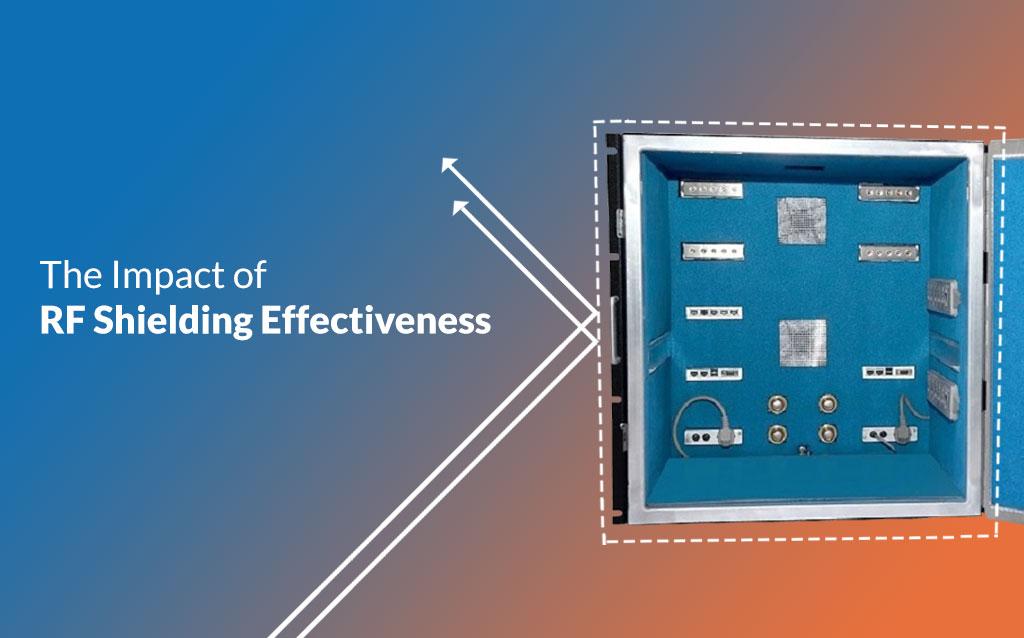
What is RF Shielding?
RF shielding, also known as radio frequency shielding, is a technique used to prevent unwanted RF (radio frequency) signals from entering or leaving a designated area. It is used to control the electromagnetic field inside an enclosed space, such as an anechoic chamber, an RF-shielded room or an RF-shielded enclosure.
Factors Influencing RF Shielding Effectiveness
- Material selection:
- Shielding geometry:
- Frequency range:
- RF Leakage:
- Environmental factors:
- RF signal power:
Benchmarking Guidelines
Signal attenuation: This measures the reduction in the amplitude of an RF signal as it passes through a shield. The greater the signal attenuation, the more effective the shield.
Shielding effectiveness (SE): This is a measure of the ability of a shield to reduce the amount of RF energy passing through it. It is typically expressed in decibels (dB) and can be calculated using the formula SE = 20 logs (E1/E2), where E1 is the incident RF energy and E2 is the transmitted RF energy.
Insertion loss: This measures the amount of power loss that occurs when RF signals pass through a shield. The lower the insertion loss, the more effective the shield.
Return loss: This measures the amount of power that is reflected back when RF signals hit a shield. The lower the return loss, the more effective the shield.
RF leakage: This measures the amount of RF energy that escapes from a shielded area. The lower the RF leakage, the more effective the shield.
Compliance with Standards: RF shielding should comply with the relevant standards for the industry and application. Some examples include MIL-STD-285, MIL-STD-188-125-1, EN50147-1, and EN50147-2 for military and industrial applications, and FCC Part 15 for consumer electronic devices.
Read more: https://www.rfelectronics.net/blog-detail/12/the-impact-of-rf-shielding-effectiveness

































